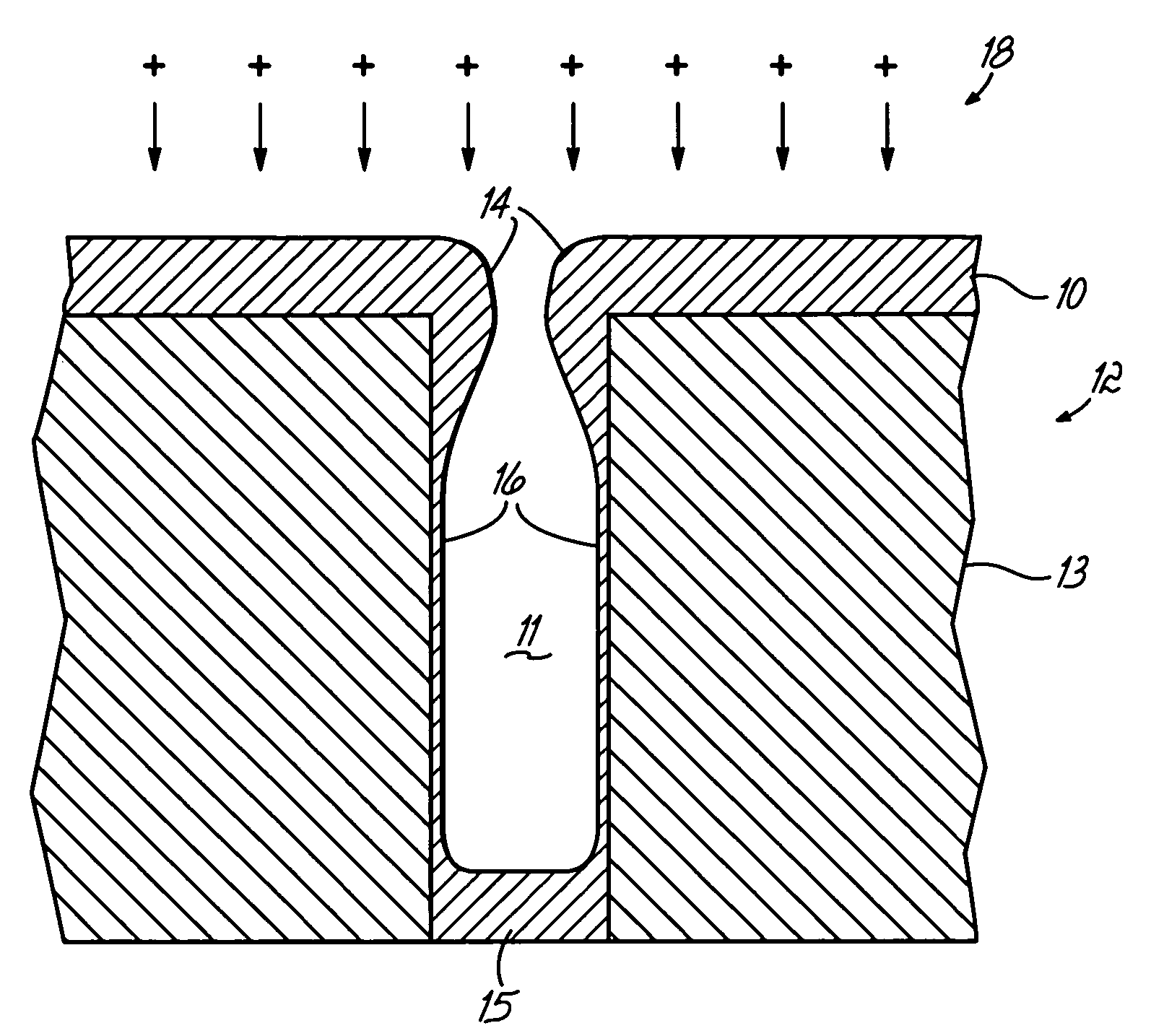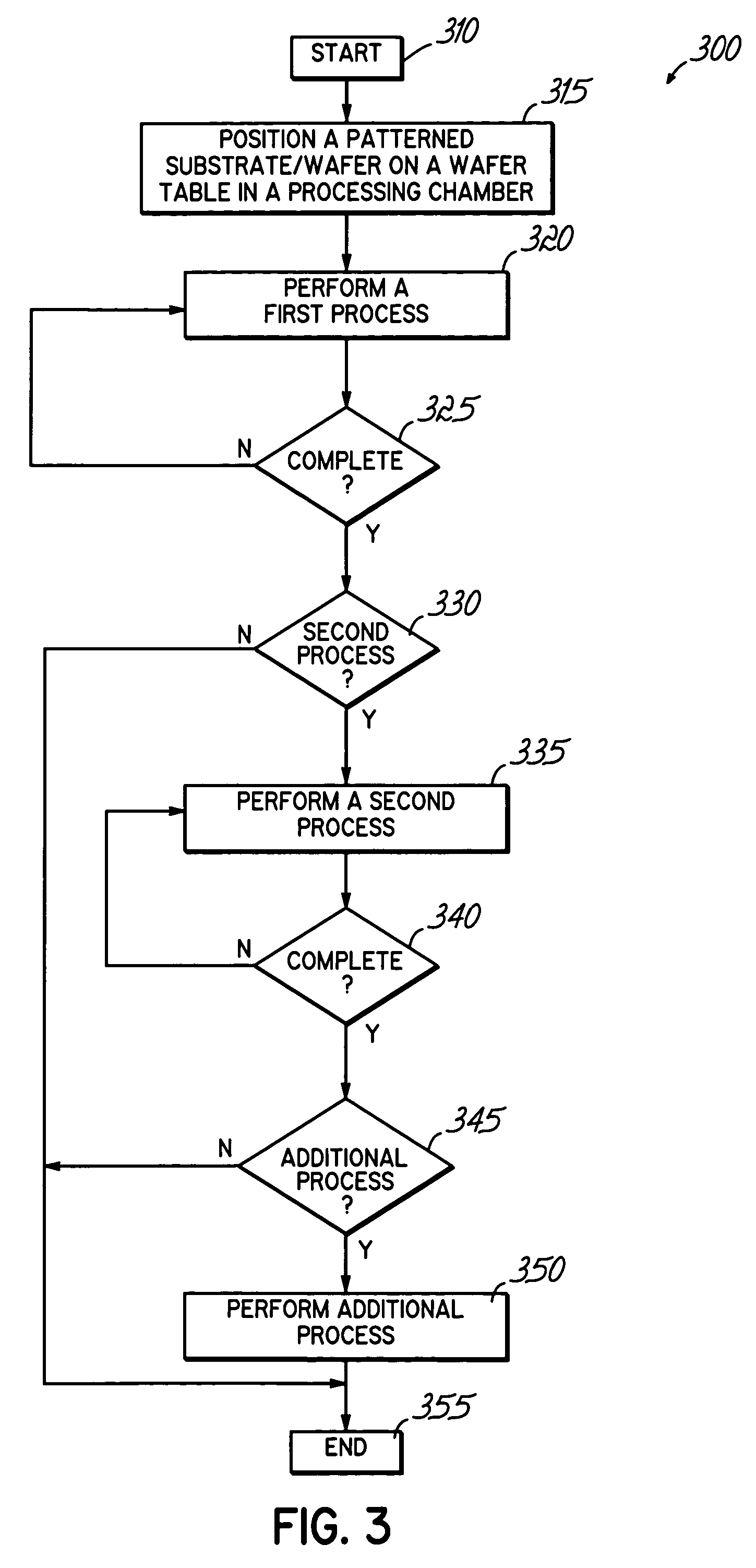Ionized physical vapor deposition (iPVD) process
a technology of physical vapor deposition and ionization, which is applied in the direction of vacuum evaporation coating, solid-state devices, coatings, etc., can solve the problem that the requirements of ionized deposition become more critical
- Summary
- Abstract
- Description
- Claims
- Application Information
AI Technical Summary
Benefits of technology
Problems solved by technology
Method used
Image
Examples
Embodiment Construction
[0020]A process is described in U.S. Patent Application Publication No. 20030034244 by Yasar et al., which is copending and assigned to the assignee of the present application, that provides ionized PVD with sequential deposition and etching. While with this type of sequencing the overhang or overburden are much improved over prior processes, some will still form during the deposition sequence and may not be entirely removed in the etch sequence.
[0021]Yasar et al. describe a technique to deposit and etch multiple times within a single vacuum chamber. Overhangs are not fundamentally controlled within the deposition step of this process. Higher bias powers are typically used in the deposition step to deposit as much bottom coverage as possible before etching back the bottom to redistribute material to the sidewalls and reduce the bottom coverage, which can add to line resistance. Reduction of overhang is achieved in the subsequent etch steps.
[0022]The invention provides a method of op...
PUM
| Property | Measurement | Unit |
|---|---|---|
| size | aaaaa | aaaaa |
| deposition rate | aaaaa | aaaaa |
| operating frequency | aaaaa | aaaaa |
Abstract
Description
Claims
Application Information
 Login to View More
Login to View More - Generate Ideas
- Intellectual Property
- Life Sciences
- Materials
- Tech Scout
- Unparalleled Data Quality
- Higher Quality Content
- 60% Fewer Hallucinations
Browse by: Latest US Patents, China's latest patents, Technical Efficacy Thesaurus, Application Domain, Technology Topic, Popular Technical Reports.
© 2025 PatSnap. All rights reserved.Legal|Privacy policy|Modern Slavery Act Transparency Statement|Sitemap|About US| Contact US: help@patsnap.com



